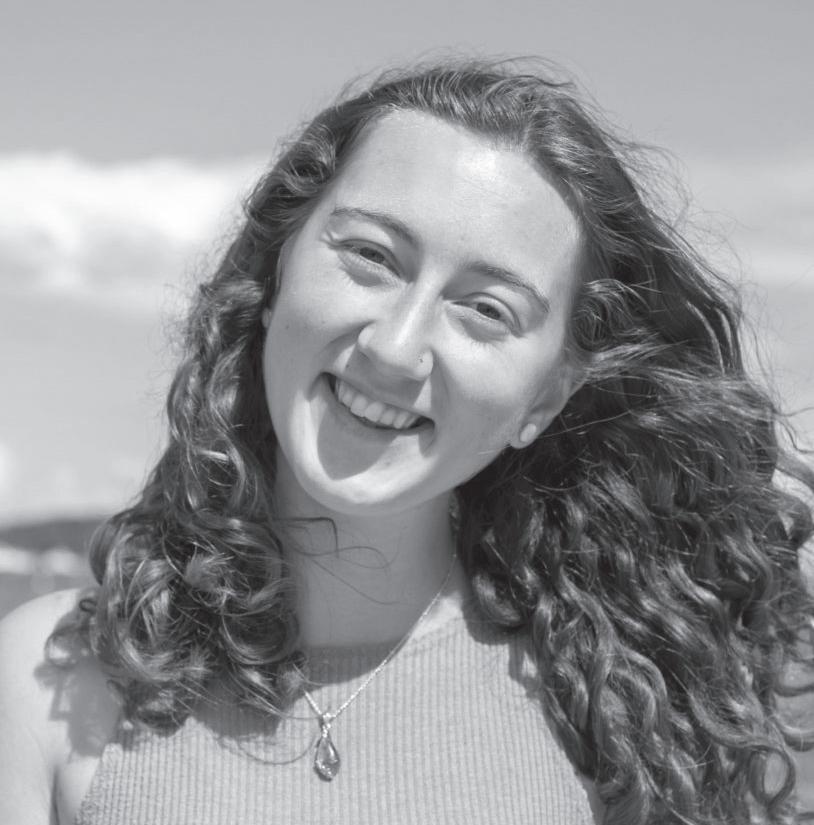
3 minute read
Tiny copepod plays outsized role
Fatty make-up makes it food for right whale
BY JEFFREY RUNGE
Advertisement
THE WORLD’S oceans are teeming with plankton, microscopic life that move where the currents take them. Among the plankton are algal cells called phytoplankton and singlecelled and multicellular animals called zooplankton. A vertical tow with a fine-mesh net deployed just about anywhere in the ocean will yield animal plankton. While there are many forms of zooplankton, the numerically dominant animals are planktonic copepods, a class of small crustaceans related to lobster and shrimp.
So numerous are the planktonic copepods that they are estimated to be 1,000 times more abundant than insects, making them arguably the most numerous multicellular animals in the world.
In our North Atlantic waters, about 15 species of copepods constitute 60-90% of the catch of a plankton net. In the deep waters of the Gulf of Maine and across the North Atlantic, one copepod species, calanus finmarchicus, is predominant.
Relatively large for a copepod, it is supremely adapted to the seasonality of the subarctic ocean. This success is reflected in its dominance in net-captured plankton in the deeper (more than 250 feet) areas of the Gulf of Maine.
Feeding on phytoplankton and single-celled zooplankton, one female calanus can release daily up to 70 eggs in a 15-minute spawning when food is abundant in spring and early summer. The eggs are microscopic, but over the course of 1-3 months, they proceed through successive molts to a preadult copepod, about the size of a grain of rice.
At this point they either molt into reproductive adults or, in summer through fall, pause to overwinter at depth until sometime the following JanuaryMarch. To prepare for the suspension of growth, the copepod accumulates phytoplankton-manufactured fats, which it stores in an oil sac. In a well-fed copepod, the oil sac takes up to 70% of the animal’s volume. It uses this highenergy store to survive the late fall and winter period, after which it molts to adult, mates, and the females feed to again start the cycle of egg production.
Across the subarctic ecosystem, zooplankton consumers such as herring, sandlance, and krill have themselves adapted to the seasonality of calanus life cycle and availability of its lipid stores. These forage fish and invertebrates in turn support piscivores such as cod, tuna, and humpback whales.
One whale species, the North Atlantic right whale, has figured out how to locate and feed on high concentrations of the lipid rich calanus directly, and it is capable of feeding on millions each day.
Before they were harvested by humans, there were thousands of right whales feeding on calanus across the North Atlantic. Now the whale’s summer distribution has contracted to the coastal northwest Atlantic where it feeds on calanus finmarchicus and also, in the Gulf of St. Lawrence, on calanus hyperboreus, an Arctic species.
Since about 2010, the North Atlantic right whale has shifted its summer foraging habitat from the Bay of Fundy area to the Gulf of St. Lawrence, due to lower abundances of its calanus prey. The lower abundance of calanus in the eastern Gulf of Maine is associated with a shift in supply of water into the Gulf, from cooler calanus-rich water coming from Canada to warmer, calanus-impoverished water adjacent to the Gulf Stream.
I think of the words of Ruth Moore, the Tremont-born writer whose work transported many “from aways” to this island: “the place you were homesick for, even when you were there.”
This longing abides in the conversations I’ve been dwelling in, the push and pull between love and precarity of place, between constancy and the constancy of change. We are living in a world remaking itself— for worse and, if we succeed, for better. When it’s grounded in community, acting on climate creates abundance. It keeps our lights on, keeps money in our pockets, keeps out the cold. On this island where the sea draws nearer, we have the chance to not merely cope with loss but to lead towards a future where that abundance includes us all. We dwell in that possibility together—that’s the complication and the hope of it all.
Brianna Cunliffe works with A Climate to Thrive on Mount Desert Island focusing on education and community-based climate action. She recently graduated from Bowdoin College with a degree in environmental studies and government.
Shifting external supply of water masses into the Gulf of Maine combined with surface water temperatures, both linked to increases in atmospheric warming due to CO2 increase, suggest lower calanus abundances in the Gulf of Maine in the future.
Several observing programs are tracking calanus and other plankton biodiversity measures in the Gulf of Maine. It is important that these observing programs be sustained to inform us about the status of the Gulf of Maine copepods. Not only the fate of the North Atlantic right whale, but also the subarctic character of the Gulf of Maine food web as we know it, hangs in the balance.
Jeffrey Runge is a professor of oceanography in the School of Marine Sciences at the University of Maine, based at the Darling Marine Center. He has been studying the ecology of zooplankton in waters off the U.S. and Canada for over forty years.








